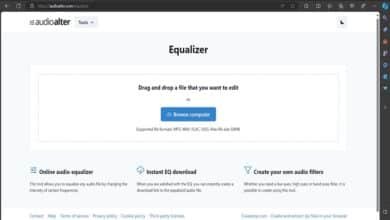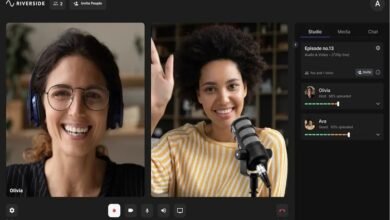The Ultimate Guide to Creating Music with a Slowed Reverb Maker

The slowed reverb maker is a tool that has transformed how we experience music. By slowing down a track and adding reverb, you create a dreamy, atmospheric effect that has gained immense popularity, particularly in online communities. Whether you’re a producer looking to experiment with new sounds or a listener intrigued by the slowed reverb effect, this blog post will offer a comprehensive guide on how to make the most of a slowed reverb maker. We’ll explore what a slowed reverb maker is, how to use it, the technicalities behind it, and much more.
What Is a Slowed Reverb Maker?
A slowed reverb maker is a digital tool that allows users to manipulate audio by slowing it down and applying reverb effects. The slowed reverb maker alters the track’s tempo, giving it a stretched, more relaxed vibe. Reverb adds depth to the sound, creating an echo effect that complements the slower tempo. The result is a track that feels more expansive, atmospheric, and sometimes nostalgic. In recent years, the use of slowed reverb maker tools has become a trend, especially on platforms like YouTube, where users often upload “slowed + reverb” versions of popular songs. The slowed reverb maker allows creators to easily replicate this effect with minimal technical skills.
How Does a Slowed Reverb Maker Work?
Understanding how a slowed reverb maker works involves breaking down its core functions. First, the “slowed” part of the slowed reverb maker modifies the song’s speed, effectively decreasing the tempo without changing the pitch (though pitch adjustments can also be applied). Next, the “reverb” aspect adds an echoing effect that simulates a sound being played in a larger space, like a concert hall. Together, these elements in a slowed reverb maker create a moody and immersive audio experience. When using a slowed reverb maker, you can control various aspects like the tempo, reverb strength, and even additional effects like pitch shifts.
Why Use a Slowed Reverb Maker?
The slowed reverb maker is popular for a reason: it gives music a unique emotional depth. Slowing down a song can make it feel more intimate, and adding reverb can create a sense of vastness. The slowed reverb maker enhances the listening experience by emphasizing the nuances of the original track, often revealing details that may have gone unnoticed in the original version. Additionally, using a slowed reverb maker allows for artistic creativity, offering producers a chance to experiment with different tempos and reverberation levels to evoke particular emotions. Whether you’re remixing a song or creating an entirely new piece, a slowed reverb maker is a powerful tool in music production.
How to Use a Slowed Reverb Maker
Using a slowed reverb maker is relatively simple, even for beginners. Most slowed reverb maker tools are user-friendly, with drag-and-drop functionality and sliders for adjusting the tempo and reverb intensity. Here’s a basic guide on how to use a slowed reverb maker:
- Upload your track: Open your slowed reverb maker and import the audio file you want to edit.
- Adjust the speed: Slow down the track using the tempo or speed controls in the slowed reverb maker. You can usually decrease the tempo by a certain percentage.
- Apply reverb: Increase the reverb settings to add depth and echo to the sound. Most slowed reverb maker tools allow you to control the size of the room or the echo time.
- Fine-tune the mix: Experiment with additional effects like equalization or pitch shift to further enhance the track.
- Export your track: Once you’re happy with the result, export the final slowed reverb version in your desired format.
Most slowed reverb maker tools also offer presets, making it easier to apply standard effects without too much manual adjustment.
The Rise of Slowed + Reverb in Music Culture
The slowed reverb maker has found a special place in online music culture. Tracks modified using slowed reverb maker tools have become synonymous with specific subgenres like “vaporwave” and “chillwave.” These genres emphasize dreamy, nostalgic soundscapes, and the slowed reverb maker effect is a perfect fit for this aesthetic. Platforms like TikTok and YouTube are flooded with slowed reverb content, often gaining millions of views and listeners. The trend has sparked a creative movement, with independent producers and amateur creators using slowed reverb makers to give well-known songs a fresh, emotionally charged sound. The slowed reverb maker is also used by DJs in live performances to create atmospheric transitions between high-energy sets.
Choosing the Right Slowed Reverb Maker
Not all slowed reverb maker tools are created equal, and choosing the right one for your needs depends on several factors. For beginners, a simple, free-to-use slowed reverb maker with basic functionalities will suffice. However, for more advanced users, a slowed reverb maker that offers more in-depth controls, like custom reverb algorithms and precise tempo adjustments, might be preferable. When selecting a slowed reverb maker, it’s important to consider compatibility with your current audio setup, ease of use, and available features like effects presets and export quality. Some popular slowed reverb maker software includes Audacity (free and open-source), FL Studio, and even web-based options like Reverb.com. Each slowed reverb maker has its pros and cons, so it’s worth experimenting to find the one that fits your workflow.
Tips for Creating High-Quality Tracks with a Slowed Reverb Maker
To get the best results from a slowed reverb maker, there are several best practices to follow. First, start with high-quality audio files, as the slowed reverb maker will amplify any imperfections in low-quality tracks. Next, be mindful of how much you slow down the track; going too slow can distort the sound. In most slowed reverb maker tools, you can preview changes in real-time, so take your time adjusting the settings. When adding reverb, consider the type of sound you’re aiming for. Longer reverb times can create an expansive feel, while shorter reverb times may maintain a closer, more intimate atmosphere. Lastly, save your slowed reverb maker project files in case you want to tweak the track later. These tips will help you maximize the potential of any slowed reverb maker.
Conclusion
The slowed reverb maker is a fantastic tool for both amateur and professional music producers. Its ability to slow down a track and add atmospheric depth through reverb makes it an essential component of modern music production, especially in genres like vaporwave and chillwave. Whether you’re looking to remix a popular song or create an entirely new auditory experience, the slowed reverb maker gives you creative freedom. By understanding how to effectively use the slowed reverb maker and experimenting with its various settings, you can transform any track into something truly unique. As the trend of slowed + reverb continues to grow, learning how to utilize a slowed reverb maker can significantly enhance your music production skills.
FAQs
1. What is a slowed reverb maker? A slowed reverb maker is a tool that slows down the tempo of a track while adding reverb to create an echoing, atmospheric effect.
2. How does a slowed reverb maker work? A slowed reverb maker reduces the track’s speed and adds reverb, giving the song a stretched, ethereal sound. This combination enhances the overall audio experience.
3. What is the best slowed reverb maker for beginners? For beginners, free options like Audacity or web-based slowed reverb makers like Reverb.com are excellent choices due to their ease of use.
4. Why is slowed + reverb music popular? Slowed + reverb music has gained popularity for its ability to transform familiar tracks into more emotional, atmospheric versions, appealing to a wide audience.
5. Can I use a slowed reverb maker on any type of music? Yes, you can use a slowed reverb maker on any music genre. However, it works best with tracks that benefit from a slower tempo and an expansive sound.




